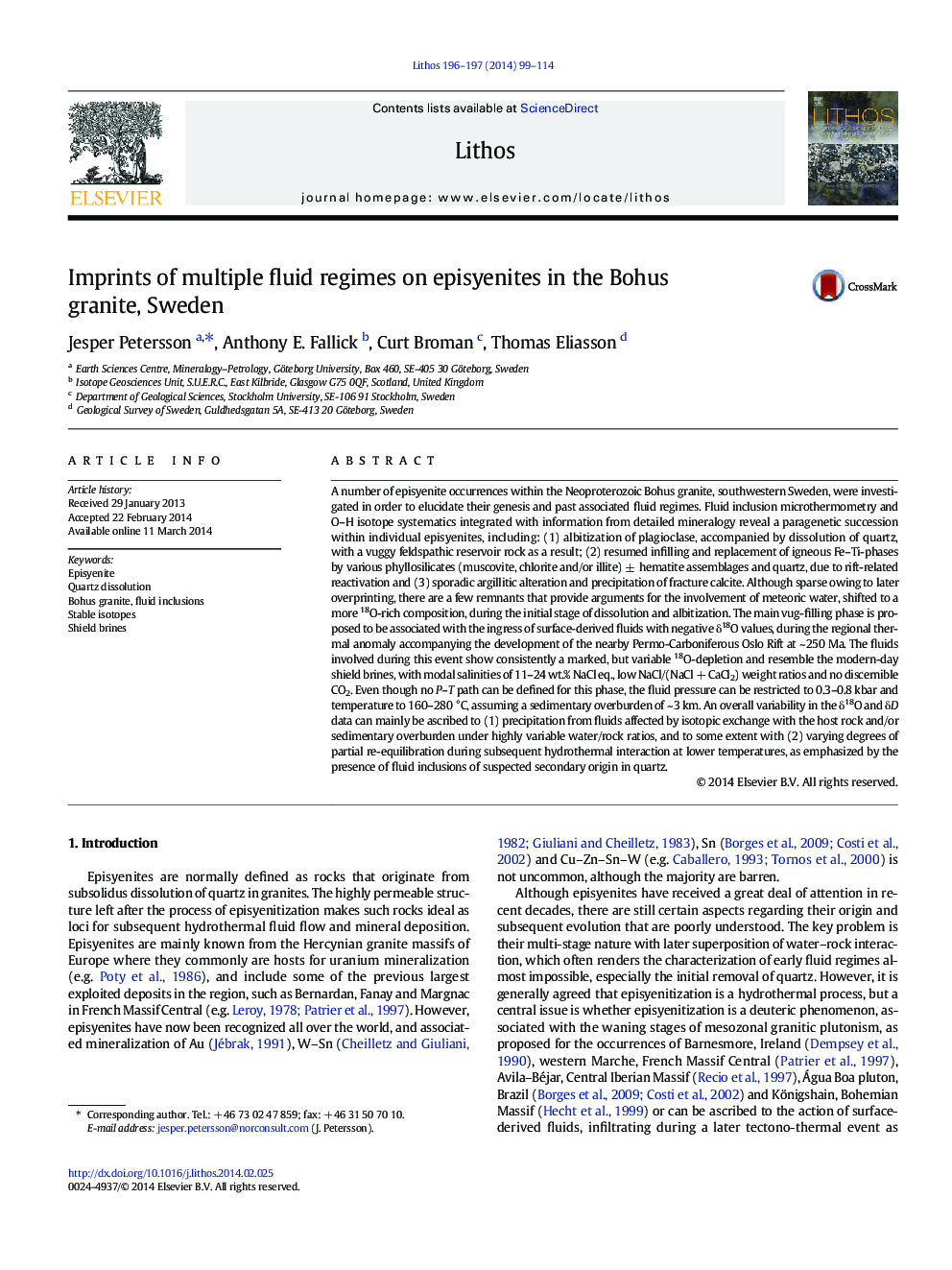| کد مقاله | کد نشریه | سال انتشار | مقاله انگلیسی | نسخه تمام متن |
|---|---|---|---|---|
| 4715976 | 1638678 | 2014 | 16 صفحه PDF | دانلود رایگان |

• Episyenites in the Bohus granite were mainly developed during two separate stages.
• The initial stage of quartz removal and albitization is related to the cooling of the host granite.
• A subsequent reactivation occurred during the development of the nearby Oslo Rift.
• The mineral δ18O and δD data exhibit a general isotopic disequilibrium.
• The fluids involved during reactivation resemble the modern-day shield brines.
A number of episyenite occurrences within the Neoproterozoic Bohus granite, southwestern Sweden, were investigated in order to elucidate their genesis and past associated fluid regimes. Fluid inclusion microthermometry and O–H isotope systematics integrated with information from detailed mineralogy reveal a paragenetic succession within individual episyenites, including: (1) albitization of plagioclase, accompanied by dissolution of quartz, with a vuggy feldspathic reservoir rock as a result; (2) resumed infilling and replacement of igneous Fe–Ti-phases by various phyllosilicates (muscovite, chlorite and/or illite) ± hematite assemblages and quartz, due to rift-related reactivation and (3) sporadic argillitic alteration and precipitation of fracture calcite. Although sparse owing to later overprinting, there are a few remnants that provide arguments for the involvement of meteoric water, shifted to a more 18O-rich composition, during the initial stage of dissolution and albitization. The main vug-filling phase is proposed to be associated with the ingress of surface-derived fluids with negative δ18O values, during the regional thermal anomaly accompanying the development of the nearby Permo-Carboniferous Oslo Rift at ~ 250 Ma. The fluids involved during this event show consistently a marked, but variable 18O-depletion and resemble the modern-day shield brines, with modal salinities of 11–24 wt.% NaCl eq., low NaCl/(NaCl + CaCl2) weight ratios and no discernible CO2. Even though no P–T path can be defined for this phase, the fluid pressure can be restricted to 0.3–0.8 kbar and temperature to 160–280 °C, assuming a sedimentary overburden of ~ 3 km. An overall variability in the δ18O and δD data can mainly be ascribed to (1) precipitation from fluids affected by isotopic exchange with the host rock and/or sedimentary overburden under highly variable water/rock ratios, and to some extent with (2) varying degrees of partial re-equilibration during subsequent hydrothermal interaction at lower temperatures, as emphasized by the presence of fluid inclusions of suspected secondary origin in quartz.
Journal: Lithos - Volumes 196–197, May 2014, Pages 99–114